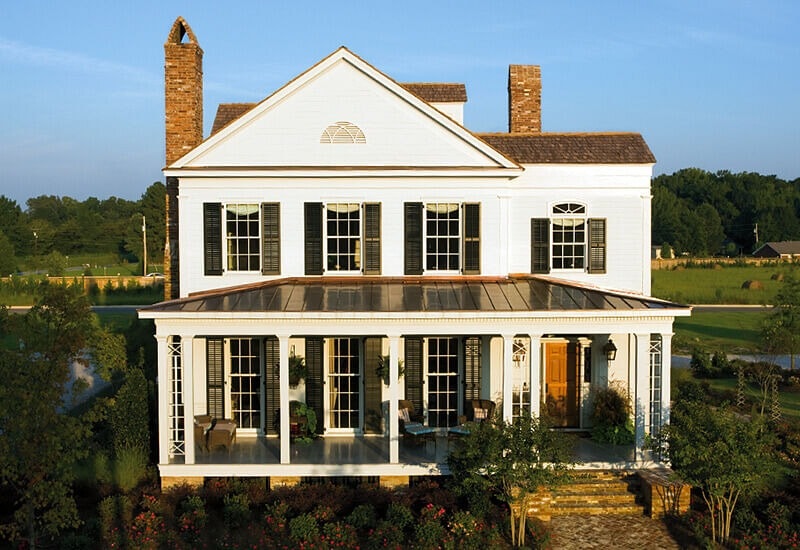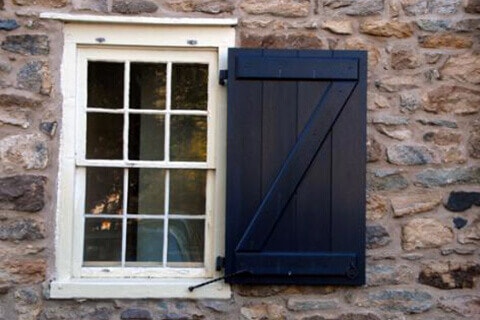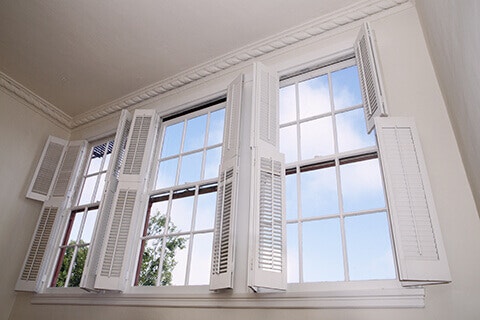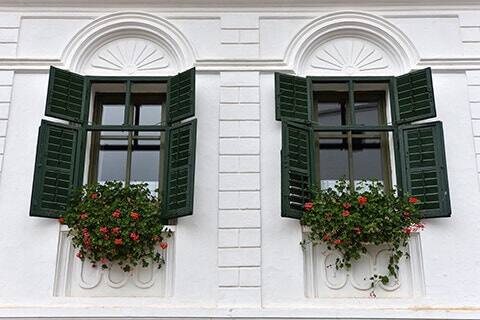Types of Window Shutters
Posted
on March 30, 2017

If you've just built, purchased, or remodeled a house, you might be wondering, "Do I need shutters?" The short answer to that question is that while shutters aren't necessary, many homeowners choose to have them anyway. In this article, we'll go over some common questions about shutters, such as why to put shutters on a house and what types of shutters are available.
Why put shutters on a house?
Shutters actually existed before glass windows, giving people the ability to open their home to ventilation and light with the ability to close the window opening to weather, noise, and animals. Today, we have glass windows and screens, so shutters are no longer quite as necessary. But they can still be a great decorative element and some homeowners like shutters in place of more traditional draperies or curtains.
Many homeowners in the Southwest choose to add shutters because they are good at keeping out sunlight. When closed, shutters can help reduce heat gain and loss in your home. They also give a different look than other room darkeners such as blinds and curtains.1


Types of shutters
A common style of shutters in America is louvered shutters, which consist of horizontal slats. Like blinds, these shutters work best for keeping light out. These shutters can be closed over the windows while still allowing in fresh air through the slats.
Another style to consider is panel shutters. Panel shutters are solid rectangles that resemble small, narrow doors. They were used in colonial New England and still have a colonial feel. Modern panel shutters typically consist of wood panels, a vapor barrier, and sometimes a decorative covering to decrease both heat loss and summer heat gain.2
Lastly, there are board and batten shutters. This rustic style of shutters resembles small barn doors. They usually consist of three or four vertical boards overlaid with two or three short, horizontal boards. These shutters can actually be made at home fairly easily.
Shutter materials
There are three main materials used to make shutters: wood, vinyl, and composite material - a combination of wood and synthetic material.
Wood shutters have the most traditional and authentic look, but the downside of wood shutters is that they require regular maintenance.
Vinyl shutters do not require as much maintenance, but they can look inexpensive and artificial. They are usually mounted to the side of the house rather than being attached to the windows by hinges. Even though the shutters may only be decorative, mounting them directly to the side of your house can make them look like an afterthought that isn't really integrated into the architecture of the home.
A middle ground between wood and vinyl is a composite material. It is closer to the look and feel of wood, but it does not require as much maintenance as wood.


Interior or exterior?
Shutters are most often found on the exterior of a house, but they can be placed on the interior as well.
According to energy.gov, when properly designed, exterior shutters must be integrated into your home's architecture with special consideration given to mounting, drainage, and hinging. When fastened and used correctly, exterior shutters can give your home weather protection in addition to an aesthetic look. Many shutters on houses are installed as an aesthetic option and are inoperable.
Interior shutters can be mounted on hinges on either side of a window and opened or closed depending on desired light. You can also install interior bi-fold or tri-fold shutters, which consist of two or three panels that fold together when they are not covering the window.
Louvered shutters are most popular for interiors because panel and batten shutters have quite a heavy appearance. But panel shutters may be the right choice for you if you want to block out as much light as possible. When choosing shutters, be sure to consider any interior space the shutters require when opened.
Another style of interior shutters to consider for decorative purposes is the cafe style. These louvered shutters cover only the bottom half of the window. They are so-named because they are often used in French cafes to give customers privacy.3
Choosing shutters for your home
When choosing shutters for your home, you should opt for a style that will complement the architecture of your house and appear authentic. Be sure to consider proper installation on shutters - both interior and exterior - to ensure proper mounting, hinging, and drainage. Though not necessary, shutters can add a personal and charming touch.
Schedule a free consultation to find windows and doors for your home.
